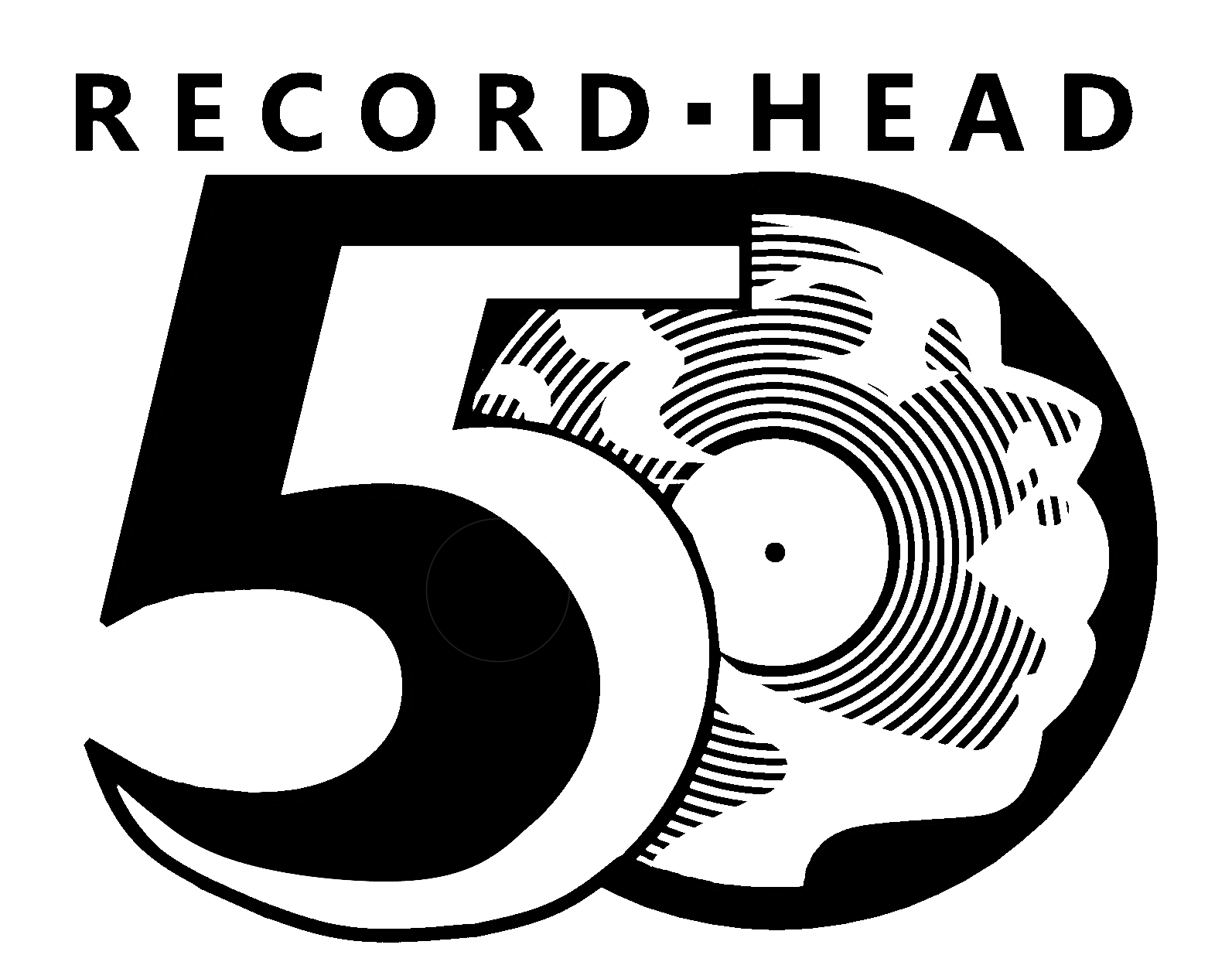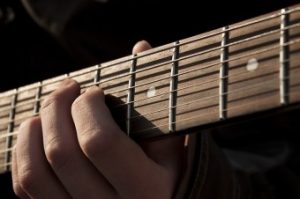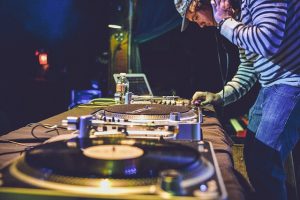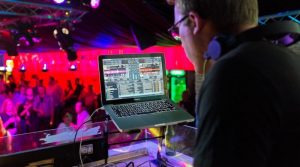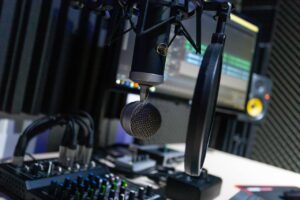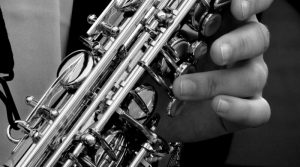It’s a great time to start a band. While electronic music is the mainstream leader, genres like rock, soul, punk, metal, and funk are alive and well. Not sure where to begin? This article will cover the must-have equipment to start a band.
Instruments
Instruments are the first items to go on any gig equipment checklist. The most prominent ones you’ll see are guitars, bass guitars, drum kits, and keyboards.
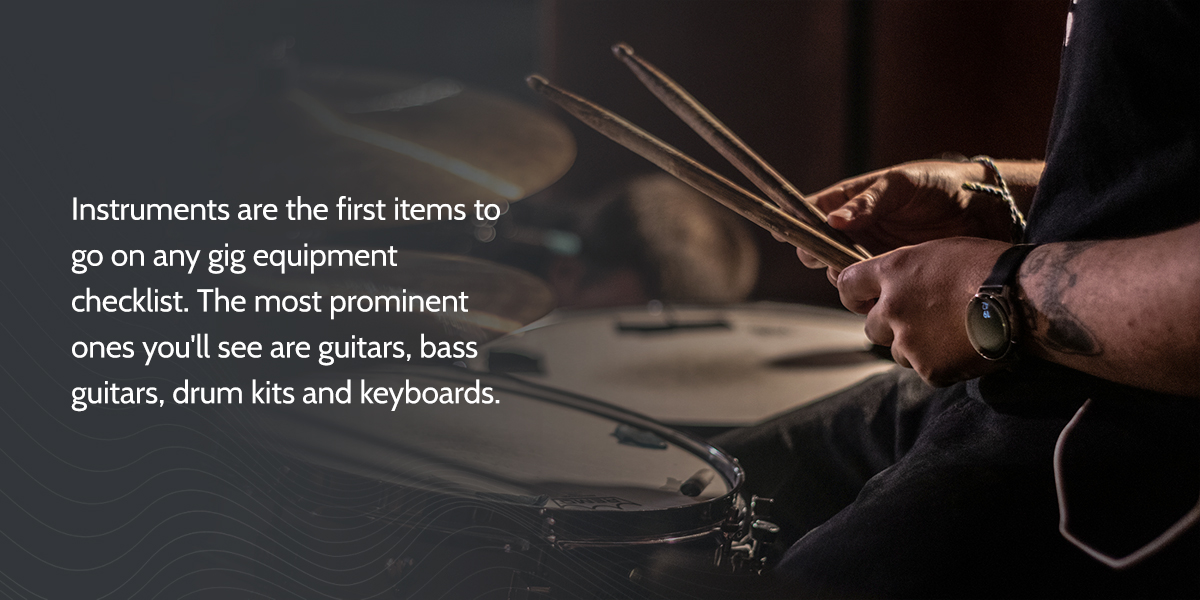
The two main types of guitars are acoustic and electric. Each has its time and place, and they also sound great side by side for soft or mellow tunes. The bass guitar will provide the low end.
Drums hold down the rhythm. A standard four-piece drum kit consists of a few parts — the kick drum, snare drum, floor tom and rack tom. From there, you can add a few cymbals, starting with a hi-hat, crash and ride.
Keyboards are less common than the instruments above, but they add texture. And with the rise of MIDI technology, you can use a keyboard to replicate virtually any instrument.
Microphones and Stands
A reliable microphone will boost your singer over the band. The industry standard vocal mic is the Shure SM-58, which is a dynamic microphone with the best frequency response for vocals.
You’ll also need stands for your mics. A singer without an instrument can use a straight stand, but you’ll need a boom arm for anyone playing and providing vocals at the same time.
Amplification
Guitars, basses, keyboards and microphones need to plug into an amplifier to be heard in a crowd. You’ll need instrument amps and a public address (PA) system for gigs and rehearsals.
Guitar and Bass Amps
Aside from differences in wattage and frequency output, guitar and bass amps are quite similar. There are a few factors to consider when choosing an amp:
- Tube vs. solid-state: Tube amps use vacuum tubes for natural compression and distortion, but they’re heavy. Solid-state amps use transistors to lighten the load and reduce the price. Some players claim they lack the old-school sound and feel, though. You might want to try both to see what works.
- Combo vs. stack: A combo amp has the amplifier and speakers in one box. A stack consists of an amplifier head with a speaker cabinet connected using a speaker cable. Combo amps are usually smaller, while stacks are louder.
- Venue: Where will you play most of your gigs? There’s no need to bring a giant stack to a dive bar, but the smallest combo amps won’t project over the drums at practice.
PA System and Stage Monitors
PA systems are necessary for practice or for when you need to supply your own sound equipment at a gig. They’re mostly used for vocals, but you can run a bass guitar or keyboard through the PA in a pinch.
Like guitar and bass stacks, PA systems consist of an amplifier head and speakers. You can also get stage monitors that point back at you so you can hear what you’re playing.
Cables
There are three types of cables to keep around — instrument cables, speaker cables, and microphone cables.
Instrument cables are ¼-inch tip-sleeve (TS) cables that look like upsized auxiliary cables. These cables use thin wires that are shielded to prevent interference from nearby electrical signals.
Speaker cables are also ¼-inch TS cables, so they’re easy to confuse with instrument cables — but don’t make that mistake. Speaker cables are built to carry stronger signals and deal with lower impedance. That means you’ll get a lot of nasty noise if you try to plug in an instrument with a speaker cable.
Microphone cables are external live return (XLR) cables. An XLR cable can carry a powerful signal without interference, which helps achieve vocal clarity through the PA.
Find Deals on Everything You Need to Start Your Band
Costs can add up fast when starting a band, so purchase your gear somewhere you know you can get a great deal. At Record Head, we buy, sell and trade all kinds of music equipment. Visit our shop in West Allis, Wisconsin, to see what we have in store — or browse our online shops for guitars, keyboards, microphones, and more.
